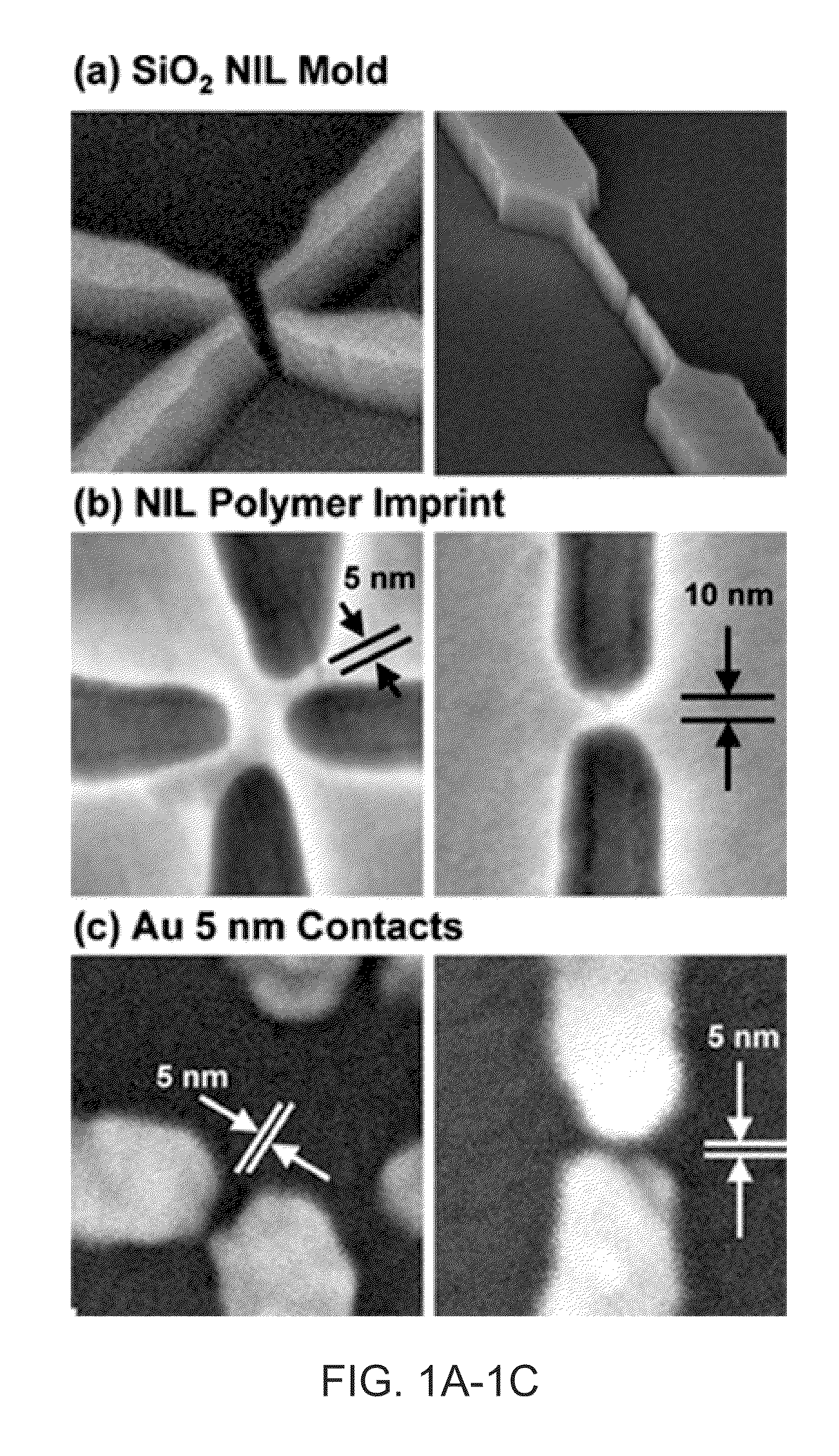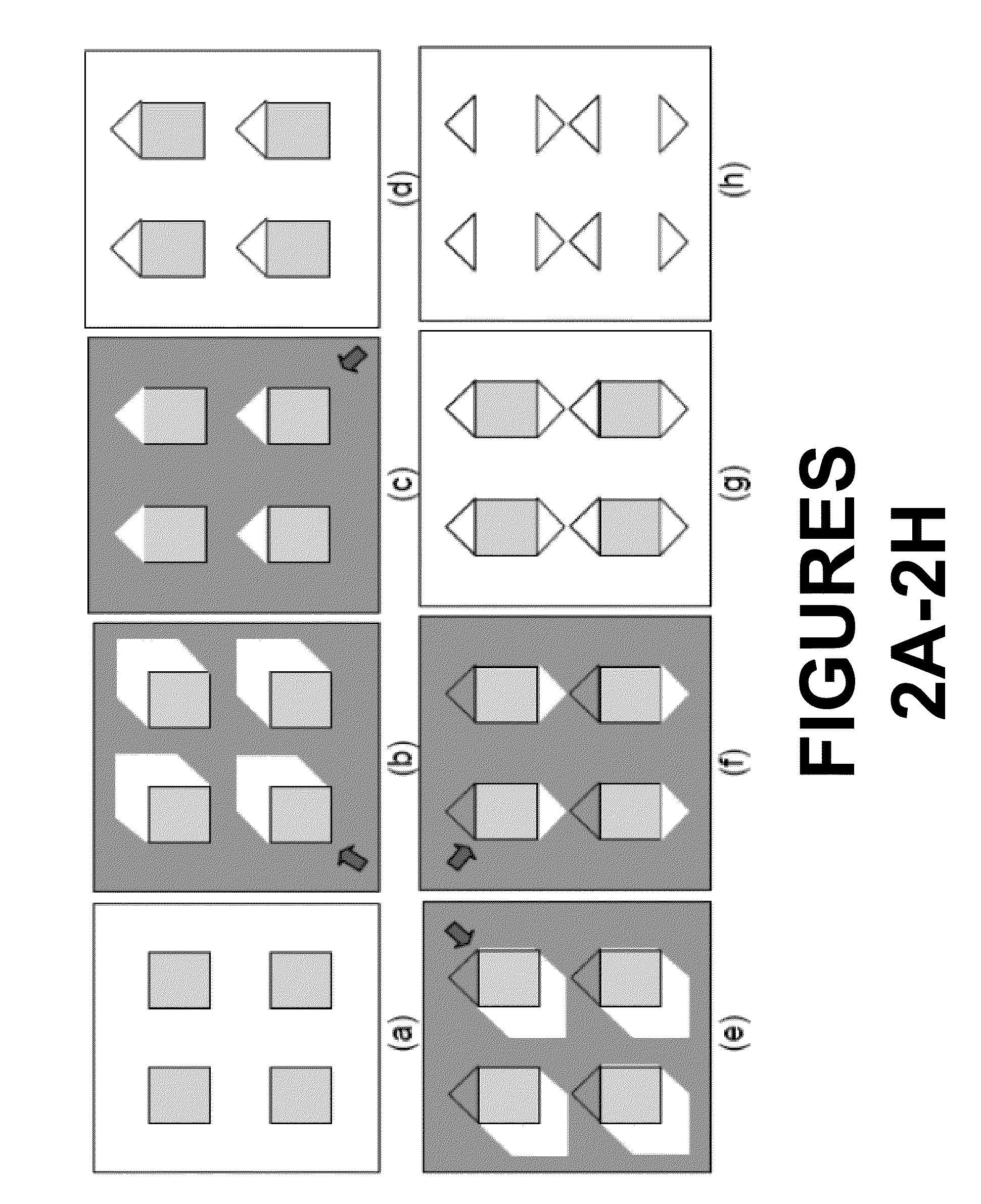Methods for fabricating large area nanoimprint molds
a nanoimprint mold and large area technology, applied in the field of large area nanoimprint mold fabrication, can solve the problems of inability to meet current needs, inability to meet current fabrication requirements, and significant reduction in fabrication reliability and throughput, and achieve the effect of avoiding the use of large-area sers and reducing the number of manufacturing steps
- Summary
- Abstract
- Description
- Claims
- Application Information
AI Technical Summary
Problems solved by technology
Method used
Image
Examples
Embodiment Construction
[0019]Nanofabrication with Fine Feature Size, High Precision and Fast Turnaround
[0020]To meet the needs of high resolution and fast turnaround nanopatterning for
[0021]SERS research and applications, we propose the use nanoimprint as a major approach to duplicate the SERS patterns with molds fabricated by either direct writing or by other innovative methods that do not need direct writing. Our innovative methods can create SERS nanoimprint molds over large areas (6″ wafers), and can create very small feature sizes with good dimension control.
[0022]The reason for avoiding direct-write EBL in producing SERS nanostructures is that as the feature size becomes smaller, the reliability and dimension control of EBL becomes very poor and throughput drops drastically. Hence, multiple runs are required to obtain one good sample. In contrast , once a good nanoimprinting mold is made (the original or “master” mold), each NIL duplication will faithfully reproduce the exact pattern on the mold wit...
PUM
| Property | Measurement | Unit |
|---|---|---|
| size | aaaaa | aaaaa |
| area | aaaaa | aaaaa |
| diameter | aaaaa | aaaaa |
Abstract
Description
Claims
Application Information
 Login to View More
Login to View More - R&D
- Intellectual Property
- Life Sciences
- Materials
- Tech Scout
- Unparalleled Data Quality
- Higher Quality Content
- 60% Fewer Hallucinations
Browse by: Latest US Patents, China's latest patents, Technical Efficacy Thesaurus, Application Domain, Technology Topic, Popular Technical Reports.
© 2025 PatSnap. All rights reserved.Legal|Privacy policy|Modern Slavery Act Transparency Statement|Sitemap|About US| Contact US: help@patsnap.com



